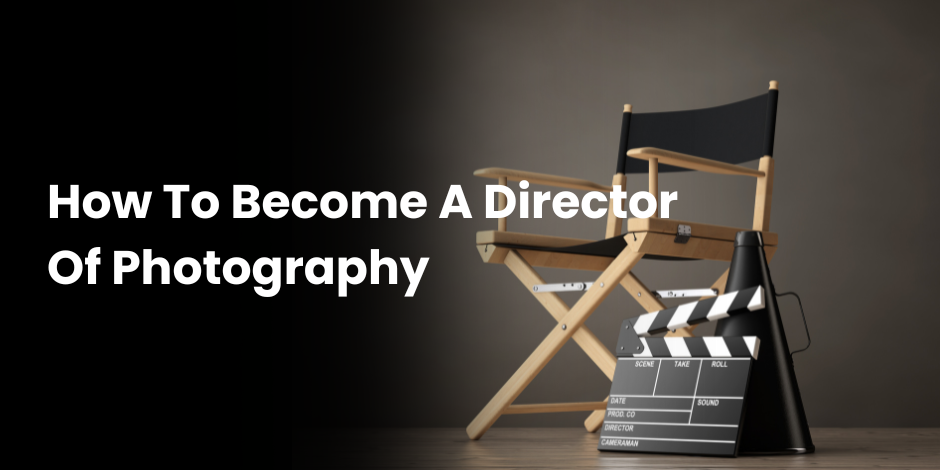Discover Studios, Services & More Across USA | StudioBDTLA
How To Become A Director Of Photography

The world of filmmaking is a blend of art and technology, and at the center of this creative whirlwind is the Director of Photography (DoP). For those with a passion for storytelling through visuals, becoming a DoP is a dream career. This blog post will guide aspiring filmmakers through the steps to become a Director of Photography, from understanding the role to gaining practical experience and building a career.
Understanding the Role of a Director of Photography
Before embarking on the path to becoming a Director of Photography, it’s crucial to understand what the role entails. A DoP, also known as a cinematographer, is responsible for the visual look and feel of a film. They work closely with the director to create a visual narrative that supports the story.
The DoP’s responsibilities include selecting the right cameras, lenses, and lighting to achieve the desired look. They also collaborate with other departments, such as art direction and costume design, to ensure visual consistency. It’s a role that requires both technical expertise and artistic vision.
To excel as a DoP, one must have a keen eye for detail and a deep understanding of how visuals impact storytelling. This combination of skills allows the cinematographer to translate the director’s vision into compelling images.
Developing Technical Skills
A strong foundation in technical skills is essential for any aspiring Director of Photography. Mastering the use of cameras and lenses is a fundamental part of this process. Understanding how different lenses affect depth of field, perspective, and focus is crucial for creating the desired visual effect.
Lighting is another critical aspect of a DoP’s toolkit. Learning how to manipulate light to create mood and atmosphere is a skill that takes time to develop. Experimenting with various lighting setups and understanding how they interact with different types of film or digital sensors is indispensable.
Additionally, knowledge of post-production processes, such as color grading and editing, can enhance a DoP’s ability to achieve the final look they envision. Familiarity with software like Adobe Premiere Pro and DaVinci Resolve can be beneficial.
Building a Strong Visual Aesthetic
While technical skills are vital, developing a unique visual aesthetic is what sets a Director of Photography apart. This involves cultivating an artistic vision that aligns with storytelling. Watching films, studying photography, and analyzing paintings can provide inspiration and help develop a personal style.
Creating a portfolio of work is a great way to showcase your visual aesthetic. This can include short films, music videos, or any visual content that reflects your style and creativity. A strong portfolio can open doors to collaborations and opportunities in the film industry.
Aspiring DoPs should also seek feedback from peers and mentors. Constructive criticism can help refine one’s visual style and identify areas for improvement. Building a network of industry professionals can provide valuable insights and guidance.
Gaining Practical Experience
Practical experience is invaluable for anyone pursuing a career as a Director of Photography. Start by working on independent film projects, student films, or local productions. These opportunities allow you to apply your skills in real-world scenarios and gain hands-on experience.
Networking is a powerful tool for finding opportunities in the film industry. Attend film festivals, workshops, and industry events to connect with filmmakers and other professionals. Building relationships can lead to collaborations and job offers.
Consider seeking mentorship from experienced cinematographers. Learning from those who have succeeded in the field can provide valuable insights and help you avoid common pitfalls. Many established DoPs are willing to share their knowledge with aspiring filmmakers.
Understanding the Filmmaking Process
To be an effective Director of Photography, it’s crucial to understand the entire filmmaking process. This includes pre-production planning, production, and post-production. Knowing how each stage impacts the final product will make you a more versatile and valuable team member.
In pre-production, collaborate with the director and other department heads to develop a visual plan for the film. This involves creating shot lists, storyboards, and lighting diagrams to ensure a seamless production process.
During production, work closely with the camera and lighting crews to execute the visual plan. Pay attention to details, such as framing, composition, and camera movement, to ensure consistency with the intended visual style.
In post-production, collaborate with editors and colorists to achieve the desired final look. Understanding how footage is edited and color graded can help you make informed decisions during production.
Navigating the Industry
Breaking into the film industry can be challenging, but persistence and determination are key. Start by gaining experience as a camera assistant or operator to build your skills and industry connections. These roles can provide valuable insights into the workings of a film set.
Networking remains an essential part of navigating the industry. Attend industry events, join filmmaking organizations, and connect with professionals in the field. Building a strong network can lead to job opportunities and collaborations.
Consider joining a professional guild or organization, such as the American Society of Cinematographers (ASC) or the British Society of Cinematographers (BSC). These organizations offer resources, networking opportunities, and recognition within the industry.
Showcasing Your Work
Having a strong online presence is crucial for showcasing your work as a Director of Photography. Create a professional website or portfolio that highlights your best projects and demonstrates your visual style. Include a reel that showcases your versatility and creativity.
Utilize social media platforms, such as Instagram and Vimeo, to share your work and connect with other filmmakers. Engaging with the online filmmaking community can lead to collaborations and exposure.
Pitch your work to film festivals and competitions. Recognition from these platforms can boost your credibility and visibility in the industry. Winning awards or receiving nominations can also open doors to new opportunities.
Staying Current with Technology
The film industry is constantly evolving, with new technologies and techniques emerging regularly. Staying current with these advancements is essential for any Director of Photography. Follow industry publications, attend workshops, and participate in seminars to stay informed.
Experiment with new equipment and techniques to expand your skill set. This may include working with drones, virtual reality, or 360-degree cameras. Being adaptable to new technology can give you a competitive edge in the industry.
Collaborate with other filmmakers to explore innovative approaches to storytelling. Sharing knowledge and ideas can lead to creative breakthroughs and push the boundaries of visual storytelling.
Exploring Different Genres
To become a versatile Director of Photography, explore various genres of filmmaking. Each genre has its unique visual style and storytelling techniques. Experimenting with different genres can help broaden your skills and expand your creative repertoire.
Work on projects ranging from documentaries and music videos to commercials and narrative films. Each type of project offers unique challenges and opportunities for growth. Diversifying your portfolio can make you more attractive to potential collaborators and employers.
Don’t be afraid to step out of your comfort zone and try something new. Pushing your creative boundaries can lead to innovative visual storytelling and personal growth as a filmmaker.
Building a Strong Professional Network
In the film industry, relationships and connections play a significant role in career advancement. Building a strong professional network can lead to job opportunities, collaborations, and mentorship.
Join filmmaking communities and organizations to connect with like-minded individuals. Attend industry events, workshops, and conferences to meet professionals in the field. Engage in discussions and share your insights and experiences.
Be proactive in reaching out to potential collaborators and mentors. Express genuine interest in their work and offer to collaborate on projects. Building a reputation as a reliable and talented professional can lead to long-lasting relationships and opportunities.
FAQs
What qualifications are needed to become a Director of Photography?
While formal education in film or cinematography can be beneficial, practical experience and a strong portfolio are often more crucial. Many Directors of Photography start as camera operators or assistants and work their way up through experience.
How can I develop my visual style as a Director of Photography?
Study films, photography, and other visual arts to find inspiration and develop your unique style. Create a portfolio of work that showcases your visual aesthetic and seek feedback from peers and mentors to refine your style.
What are the essential skills for a Director of Photography?
Technical skills in camera operation, lighting, and post-production are essential. Additionally, strong communication skills, creativity, attention to detail, and the ability to collaborate effectively with others are crucial for success in this role.
Becoming a Director of Photography is a rewarding and fulfilling career path for those passionate about visual storytelling. By developing technical skills, gaining practical experience, and building a strong network, aspiring cinematographers can achieve their dreams and make a significant impact in the film industry.
